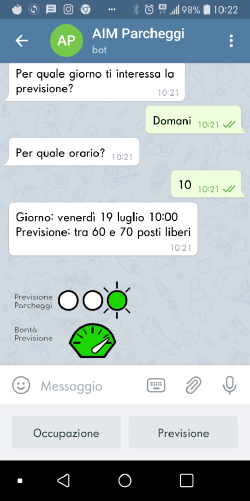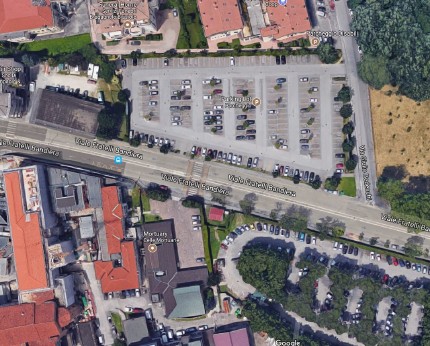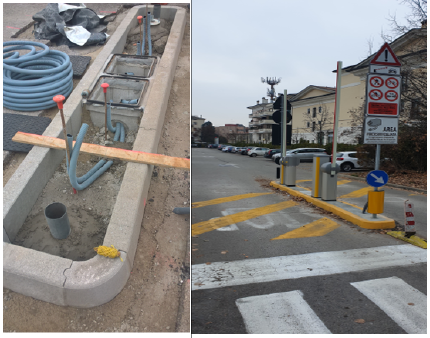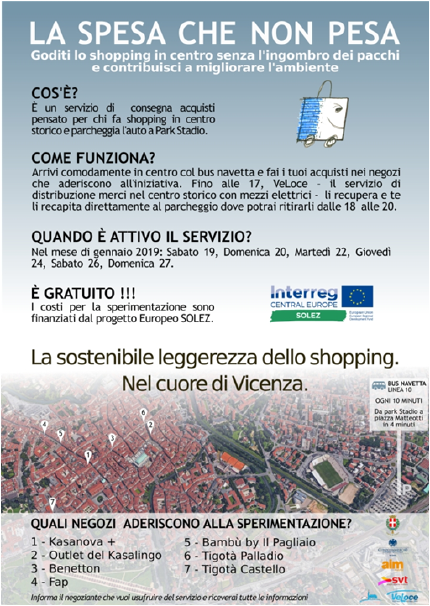Vicenza strategy plan
The SOLEZ Action Plan for integration of low-carbon policies in the mobility planning of Vicenza’s functional urban area (FUA) has been elaborated following a common approach defined at consortium level during the first project phase. This provided a model with a simplified approach to SUMP EU guidelines that made it possible to local administrators of small and medium size municipalities, to implement the concept of sustainable urban mobility planning at functional urban area level.
Following this common methodology, three participatory meetings with local key stakeholders (main
municipalities of the FUA, trading associations, mobility service providers company, etc.) have been
organized, in order to identify the main needs and opportunities of considered territories, and to really involve the different interested parties in a common planning process.The first step has been the definition of a baseline scenario in terms of national goals and challenges, regional objectives and local existing mobility plans and strategies.
Furthermore, a SWOT analysis questionnaire has been shared with FUA municipalities to highlight needs and opportunities to implement a sustainable mobility strategy in the area. A set of concrete sustainable mobility measures affecting both the main city (Vicenza) and hinterland municipalities to be implemented in the short-medium time (up to 5 years) have then been identified and summarized in the report “SOLEZ Action Plan for Vicenza FUA”.
Expected impact and benefits of the strategy
The SOLEZ Action Plan of Vicenza’s functional urban area will contribute to the reduction of congestion an polluting emissions and will improve the capacities of public administrators to implement integrated sustainable mobility strategies in their territories.
In the Action Plan, the so called “push measures” imposed to citizens and operators through the
implementation of access restrictions policies(i.e. Limited Traffic Zones, Low Emission Zones) are balanced by “pull measures”, interventions design to encourage the adoption of sustainable mobility habits such as the use of intermodality, shared mobility and ICT smart parking. Within the pull measures contained in the strategic document, two are being developed and implemented as Pilot Actions during project life.
In addition, capacity building activities, such as study visits and follow-up training workshops, have been carried on during the Action Plan elaboration process as complementary activities with the aim to increase local administrators and mobility operator’s knowledge on sustainable mobility best practices and inspire replication on their territories.
Lessons learned
The participatory process adopted for the drafting of the Action Plan, with direct involvement and
consultation of key stakeholders and delegates from hinterland municipalities, played an important role in creating consensus and real commitment towards the developed plan. The transnational Study-visits and local peer-to-peer training activities implemented in the same period and addressed mainly to the same subjects, also contributed to the creation of trust and positive relations among the different involved actors. This way, they have been generally collaborative, supportive and really interested in the Action Planning process.
For this activity, transnational cooperation has been important on a twofold level. On the one hand, it provided value added in the development of a common methodology for the elaboration of SOLEZ Action Plans. On the other hand, the possibility to organize transnational study-visits and linked training activities, the opportunity to see how other cities addressed and solved similar problems, and the awareness of being “part of a bigger network” increased the interest and motivation of people involved in the planning process, thus significantly contributed to the success of the activity.
SMART PARKING PILOT ACTION
A prediction model on parking availability for a Local Health Unit strategic parking place
The smart parking pilot action implemented in Vicenza, regards Car Park F.lli Bandiera, one of the 5 parking lot system around the Local Health Unit (ULSS Berica 8) of San Bortolo Hospital.
The overall parking strategy that the local administration aimed to implement with SOLEZ Pilot Action was to “improve user information” by giving the possibility to forecast parking availability in a given day and time and plan accordingly the visits to the Hospital with a significant reduction of parasite traffic of vehicles in search of parking spaces, traffic congestion in the Hospital area, improvement of road security and reduction of CO2 emissions.
The Smart Parking Tool developed at project level (see bottom references) has been customized to elaborate the model. According to the requirements analysis for each Smart Parking Pilot Site, Car Park F.lli Bandiera has been selected because it is the best suited to be equipped with the deployment of the data collection system choose by the administration to achieve set goals. The presence of a single access gate made it possible to equip the site with inductive loops positioned at the entrance/exit of the area and connected though the optical fiber network that wire up the all city and connect various services and other public bodies.
Therefore, the implementation of the SOLEZ Pilot action has consisted in the development of a predictive model of Car Park F.lli Bandiera occupancy by collecting data, via inductive loops, from the beginning of March 2019. At the same time, the AWS infrastructure designed has been tested verifying the performance of the algorithm created. A Chatbot on Telegram (a cloud-based instant messaging app) has been developed in parallel by AIM Mobilità (the parking provider) as communication layer to make available to the FUA citizens the data elaborated.
The model is user-friendly, provides a very reliable forecast (around 95%) of parking availability, it can be easily transferred to other systematize parking places in Vicenza. Therefore, it is expected to have in a short/medium term, a great impact on the FUA citizens habits on their daily trips towards the main city parking places.
Expected impact and benefits
In terms of benefit, the experimentation of the new detection, communication equipment installed, combined with new predictive system and ICT communication technology for collection data to smart phone application, gave a concrete opportunity to improve the current parking system that is principally based on automatic barriers.
Furthermore, the parking occupancy data collected will be extremely important to improve the overall parking strategy keeping it updated to real citizen’s needs.
Lessons learned and added value of transnational cooperation
The predictive analysis system was implemented with limited resources thanks to the use of computing environments and application programs in the cloud (Amazon Web Services). The transnational cooperation, with the assistance of Czech technical partners in this task, has been crucial.
Another positive key element of transnational cooperation has been the organization of the twinning trip with the direct involvement of the key stakeholder for Vicenza’s pilot action. This peer-to-peer experience has been extremely important in this project phase: it was a chance to discuss and clarify in person, and with peer colleagues, technical details about pilot implementation. Furthermore, the more advanced stage of implementation of Blansko P&R system, different from Vicenza’s parking strategy, has been the opportunity to evaluate another cost-effective solution that could find application also in Vicenza’s FUA and expand the concept of smart parking, with extra funding, beyond project activities. Each partner has defined own smart parking strategy according to what emerged from Action Plan elaboration at FUA level. However, it has been during the real-life mutual assistance and confrontation of the twinning experience that the full potential of the transnational cooperation has revealed and has been better exploited, resulting in the sustainability of these project outcomes.
The ICT smart parking tool developed during the project are described in the following deliverables available in the publication section:
- D.T2.1.1 – Transnational review and user requirements of smart parking solutions
- D.T2.1.2 – Overall design and Regulation Schemes and related Data Management System
- D.T2.1.3 – Smart Parking tool developed


Pilot area, Park F.lli Bandiera

Parking sensor installation
VALUE ADDED SERVICES PILOT ACTION
An innovative B2C delivery service – “La spesa che non pesa”
Vicenza’s Pilot Action concerns the design of an innovative business-to-consumer (B2C) value-added service which allows users to make purchases at the economic activities in the historic center participating in the initiative, leaving the burden of having the packets delivered safely by a third party to a strategic Park & Ride connected with the Limited Traffic Zone by shuttle bus.
A feasibility study has been commissioned to a professional in urban logistic (through a procurement process) and a real-life experiment of the service has been implemented as a substantial part of the preparatory actions for the development of the cognitive and functional framework and the calibration of the B2C freight service mode. Surveys and analysis of the area of intervention have been carried out in the first design phase with the aim of identifying and understanding the habits of users potentially interested in the purchase drop-off service
These activities led to the definition and highlighting of the characteristics of the LTZ/Centre area of the Municipality of Vicenza in terms of peculiarities, needs and behavior of the users who habitually attend it (mainly for work) and to the conclusion of the first part of the preliminary analysis.
Therefore, it was possible to customize the service offered, as well as the modus operandi to be followed. The Hub for the redelivery of goods purchased within the ZTL/Centre was also identified in the ex-ticket office booth of the Park&Ride most used by FUA users to reach the city center. In parallel, a selection of commercial activities, in line with the service requirements (selling those goods compatible with the innovative delivery), has been identified. Those that agreed, advertised the trial of the service, free of charge for the specific testing period, informing customers of the opportunity offered, pack and mark properly the items purchased and deliver them to the company in charge of the collection and return.
The Pilot Action communication campaign was carried out throughout the month prior to the implementation on media, social media, newspapers and local TV with the active support of all 8 FUA Municipalities that actively participated in all project activities.
Expected impacts and benefits
The Pilot Activity allowed to develop the idea and define the details of the proposed service, that would be offered using the electric Vehicle of the logistic operator “VeLoce”, the only operator allowed to operate within Vicenza Limited Traffic Zone, thus contributing to optimize the usage of this electric fleet. The main objectives of the service is the reduction of the use of private vehicles in daily journeys to approach the city LTZ, the increase in the use of public transport, the improvement of air quality in urban environment and by offering a value-added service improve the attractiveness of shopping in the LTZ.
Lessons learned and added value of transnational cooperation
The real-life experimentation implemented has been crucial in highlighting strength and weakness of the innovative services proposed. Through surveys and direct experiences of the retailers that participated in the experimentation, has often emerged that the right choice of the parking assigned as collection and delivery point is relevant for the service success and sustainability. The real-life experiment has demonstrated that people might be ready to have their shopping delivered to the nearest and most popular systematize parking space close to the LTZ. The option of using the P&R + the public transport is not yet shared by the most, who still find it difficult to change the well-established habit of approaching the center as much as possible by car and walk for the remaining part.
The Value-Addes Services toolbox developed during the project are described in the following deliverables available in the publication section:
- D.T2.2.1 – Study on specific supply chains in professional urban freight transport and delivery services
- D.T2.2.2 – Support tool (toolbox) for overall design of low-carbon Value-Added Services for freight and people
- D.T2.2.3 - ICT-based tools supporting Value-Added services implementation

